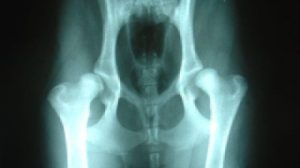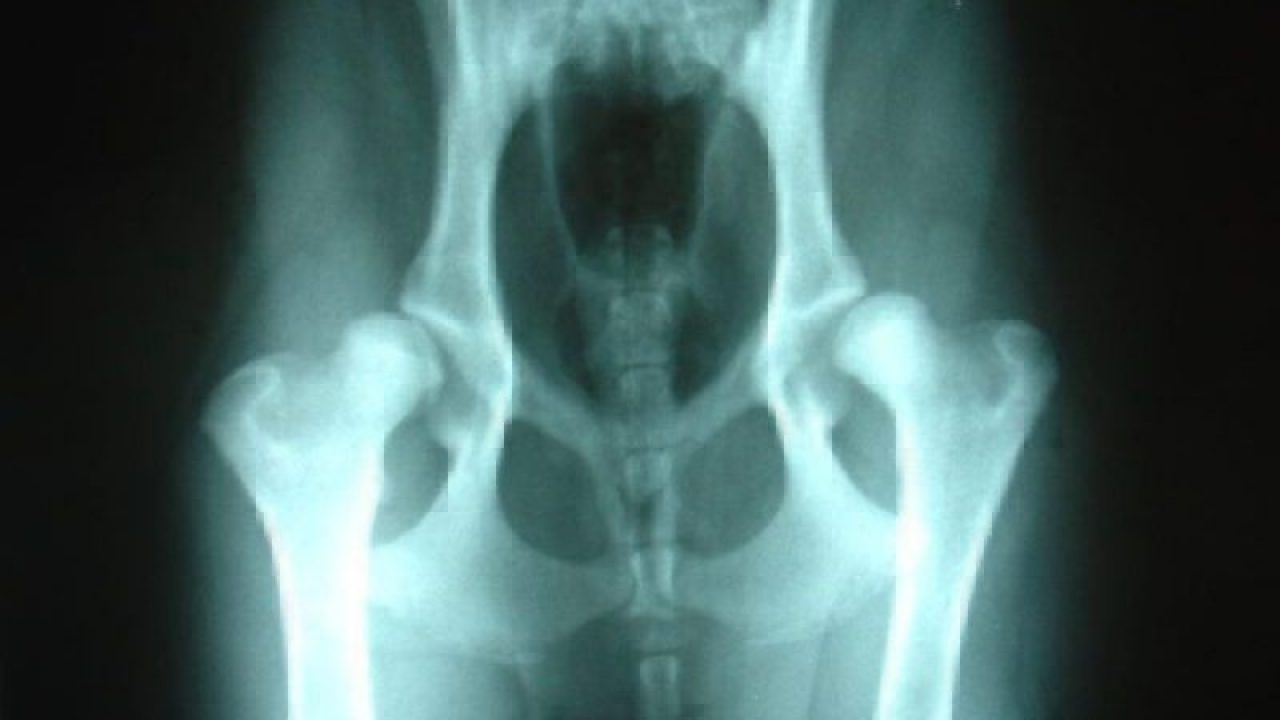Table of Contents
Key Takeaways
- Hip dysplasia is a genetic disease that affects a dog’s hip joint.
- Larger dogs are more likely to get hip dysplasia than smaller dogs.
- Controlling your dog’s weight and avoiding rough play can help prevent hip dysplasia.
- Signs of hip dysplasia are limping, refusing to jump, and being slow to rise.
- Dogs may require major surgery to treat hip dysplasia.
Has your beloved dog gone from racing around with abandon to limping, hopping, or moving more slowly lately?
If so, he or she might be exhibiting signs of canine hip dysplasia – a genetic disease of the hip joint. Dogs with this common condition have ball-and-socket joints that don’t fit quite right, which causes discomfort when they walk. If it progresses, this condition causes pain and may dramatically reduce a dog’s quality of life.
Educating yourself about common health conditions, such as hip dysplasia, can help you recognize and address early signs before they progressively worsen. This way, you can ensure your dog is comfortable and able to continue participating in activities that you both love.
What causes hip dysplasia and which dogs get it?

Hip dysplasia is a genetic condition, which means that certain dogs are more likely to be affected. Larger breeds and purebred dogs have increased risks of developing it, but smaller and mixed breed dogs can be affected too. German shepherds, Labrador retrievers, Rottweilers, Great Danes, Golden Retrievers, and Bulldogs all have a higher risk of hip dysplasia.
Since the condition is caused by hip joint deformities, it is present at birth but may go unnoticed until your dog starts growing rapidly. If you believe your pup is more likely to get hip dysplasia, talk to your veterinarian about preventive measures that can be taken.
How will I know if my dog has hip dysplasia?
If you notice one or more of the symptoms below, your dog may suffer from hip dysplasia. However, some of these symptoms could also be due to arthritis from aging. The only way to determine whether or not your dog has hip dysplasia is to visit your vet. Hip x-rays and a physical exam are needed to accurately diagnose your pet’s condition.
Symptoms of hip dysplasia
- An altered gait – limping, hopping, etc.
- Difficulty walking up stairs
- Stiffness when rising from a laying or sitting position
- Decreased activity or range of motion
- Lameness in the hind end
- Laxity in the hip joint
- Narrow stance or “bunny-hopping” gait
- Clicking sounds when walking
- Loss of thigh muscle mass
- Pain or weakness in the hind legs
How to prevent hip dysplasia or reduce symptoms
There are a few things you can do to reduce the risk and severity of hip dysplasia.
- Avoid overfeeding: Rapid growth and weight gain is thought to increase a dog’s risk of hip dysplasia due to added strain on his or her joints. Puppies should be fed three to four times a day, but an adult dog should only be fed twice per day. Consult your veterinarian for appropriate feeding guidelines.
- Get the right food and supplements: The American Kennel Club (AKC) recommends buying food specially formulated for large breed puppies to help regulate growth. Your veterinarian may also recommend a chewable dose of glucosamine or chondroitin to help build healthy joints.
- Make sure your dog gets enough exercise but avoid rough play, such as jumping, long runs, and sliding on floors. These activities put strain on a dog’s hind leg joints. Walking on a soft surface and swimming are the best exercise for dogs and will help improve range of motion.
- Physical therapy such as massage, hydrotherapy and acupuncture may provide some benefit, according to Pet Health Network.
Hip dysplasia treatment options
Sometimes preventative measures may not be enough to keep your dog from developing hip dysplasia. If it develops, a vet will recommend one of two courses – medical management or surgery.
Non-surgical treatment: For dogs showing mild symptoms of hip dysplasia, you can manage pain and discomfort with oral medications. These medications typically include a non-steroidal anti-inflammatory medication (NSAID) long-term as well as joint supplements that contain glucosamine and chondroitin. Even with medication, the disease may continue to progress and require surgical intervention. Weight loss, exercise restriction, and physical therapy may also be beneficial.
Surgical treatments: There are two common surgical treatments that are used for dogs with hip dysplasia.
- A Femoral Head Ostectomy (FHO) is performed most commonly on small-breed dogs. The head of the femur is removed, which increases joint mobility. Over time, scar tissue forms to replenish joint stability, and the leg muscles provide additional support.
- A Total Hip Replacement (THR) replaces your pet’s hip joint with a prosthetic one. Even if both your dog’s joints have dysplasia, generally only one is replaced at a time. Some dogs may only need a single hip replacement, while others with severe disease may need both.
Costs of hip dysplasia treatment
- Hip dysplasia can be expensive to treat. Pain medications and joint supplements can range anywhere from $50 to $200 a month depending on the size of your dog and frequency of dosing. Costs will vary depending on which medications are available too.
- Surgery can cost between $2,000-$7,000. FHOs are less expensive than THRs in general. This cost usually includes pre-operative bloodwork and a physical exam as well as hospitalization fees associated with surgery. Any physical therapy needed after surgery is additional.
Is hip dysplasia covered by pet insurance?
The Healthy Paws plan covers hip dysplasia treatments as long as the following conditions are met:
- Your pet is under the age of six at the time of enrollment.
- The treatments did not occur during the waiting period, which means no clinical signs or symptoms manifested within the first twelve (12) months of continuous coverage.*
Some insurance providers don’t cover hip dysplasia and other genetic conditions that develop in pets over their lifetimes, so be sure to read any insurance policies carefully.
One of our pet parents shared their story of Coco’s hip replacement surgery, which saved them $4,768 off a $6,000 vet bill using Healthy Paws insurance.
*Waiting periods do not apply to the states of Maryland and New Hampshire. Additionally, Maryland does not have age limits for hip dysplasia. For additional information on these states, view our sample policy here.
Bottom line
Canine hip dysplasia is a fairly common ailment, but with the appropriate preventative measures and medical management, your dog can live a healthy, happy life.
The content is not intended to be a substitute for professional veterinarian advice, diagnosis, or treatment. Always seek the advice of your veterinarian or other qualified health provider with any questions you may have regarding a medical diagnosis, condition, or treatment options.
If your dog is six years old or younger, get pet insurance so that hip dysplasia will be covered should you need it. Many pet parents rely on pet health insurance to pay up to 90% of their vet bills, so they can focus on what really matters: getting great health care for their pet. Find out more by getting a quote.









